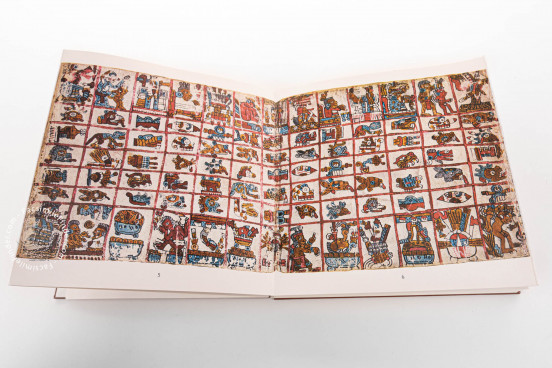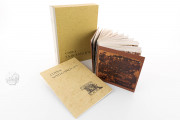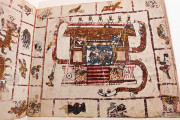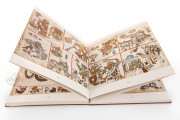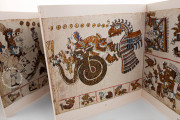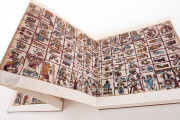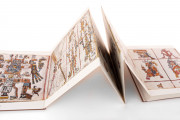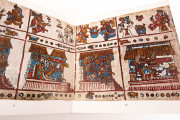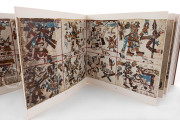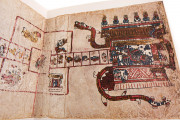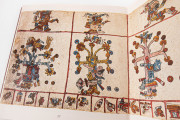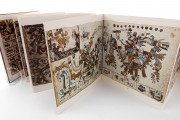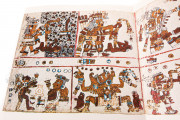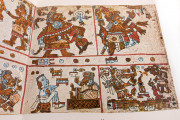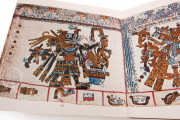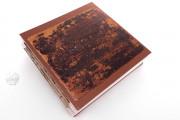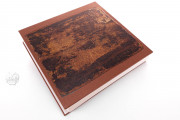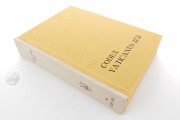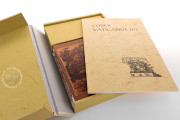The Codex Vaticanus B is one of the Borgia Group of Mesoamerican screenfold manuscripts. Probably created in the fifteenth or sixteenth century in the Mixteca region of Mexico, it is a handbook for indigenous religious leaders. Like other manuscripts of the group, the Codex Vaticanus B includes almanacs used by day keepers to guide prognostications, celebrations, and other religious rituals. It uses pictographs (picture writing) to convey information through depictions of deities and objects. Despite its designation as a "Latin" manuscript, it has no alphabetic text.
The Codex Vaticanus B, despite its nickname, is not a book composed of sheets folded and sewn at the spine. It is a screenfold, the typical format of Mesoamerican books. Ten strips of deerskin glued together and coated with a thin layer of plaster form the support. Comprised of forty-nine panels, with two bearing the covers and the others painted on both sides, it has ninety-six pages of vividly colored illustrations. Its content is read left to right on the obverse and right to left on the reverse.
Features Shared with Other Borgia Group Manuscripts
The place of origin of Codex Vaticanus B is debated, as is the case with all of the manuscripts of the Borgia Group. The combination of Nahua and Mixtec motifs suggests an origin on the edge of the Mixteca, where artists would have been receptive to both Nahua and Mixtec influences.
The Codex Vaticanus B shares several features with other members of the Borgia group. Red lines are used to divide pages into distinct spaces for day signs, patrons, and lords. The Codex Vaticanus B, like the Codex Fejérváry-Mayer, pictures animals as aggressors against humans (pp. 24-27), and it includes a marriage almanac, as do the Codex Borgia, the Codex Fejéváry-Mayer, and the Codex Laud.
Unique Features
Found only in the Codex Vaticanus B of the Borgia Group are an almanac for digging (p. 12) and the representation of the drinkers of pulque (p. 72), an alcoholic beverage prepared from agave that enjoyed special status in ancient Mesoamerican culture. When folded, Vaticanus B is the smallest of the group—a true manual in the sense of fitting comfortably in the hand. It is not as precisely painted as other manuscripts in the group, giving it the appearance of having been made for practical utility.
Long Term Ownership by the Vatican Library
How Vaticanus B traveled to Europe is unknown. It has been in the Vatican since the end of the sixteenth century. Mentioned in 1589 by the Vatican physician Michele Mercati, it appears in a library inventory of 1596-1600 as "Indorum Cultus, Delineamenta et Effigies" (religion of the Indians, drawings and images), revealing that the religious content of the codex was understood at an early date.
We have 1 facsimile edition of the manuscript "Codex Vaticanus B (3773)": Codex Vaticanus B (3773) facsimile edition, published by Akademische Druck- u. Verlagsanstalt (ADEVA), 1972
Request Info / Price
